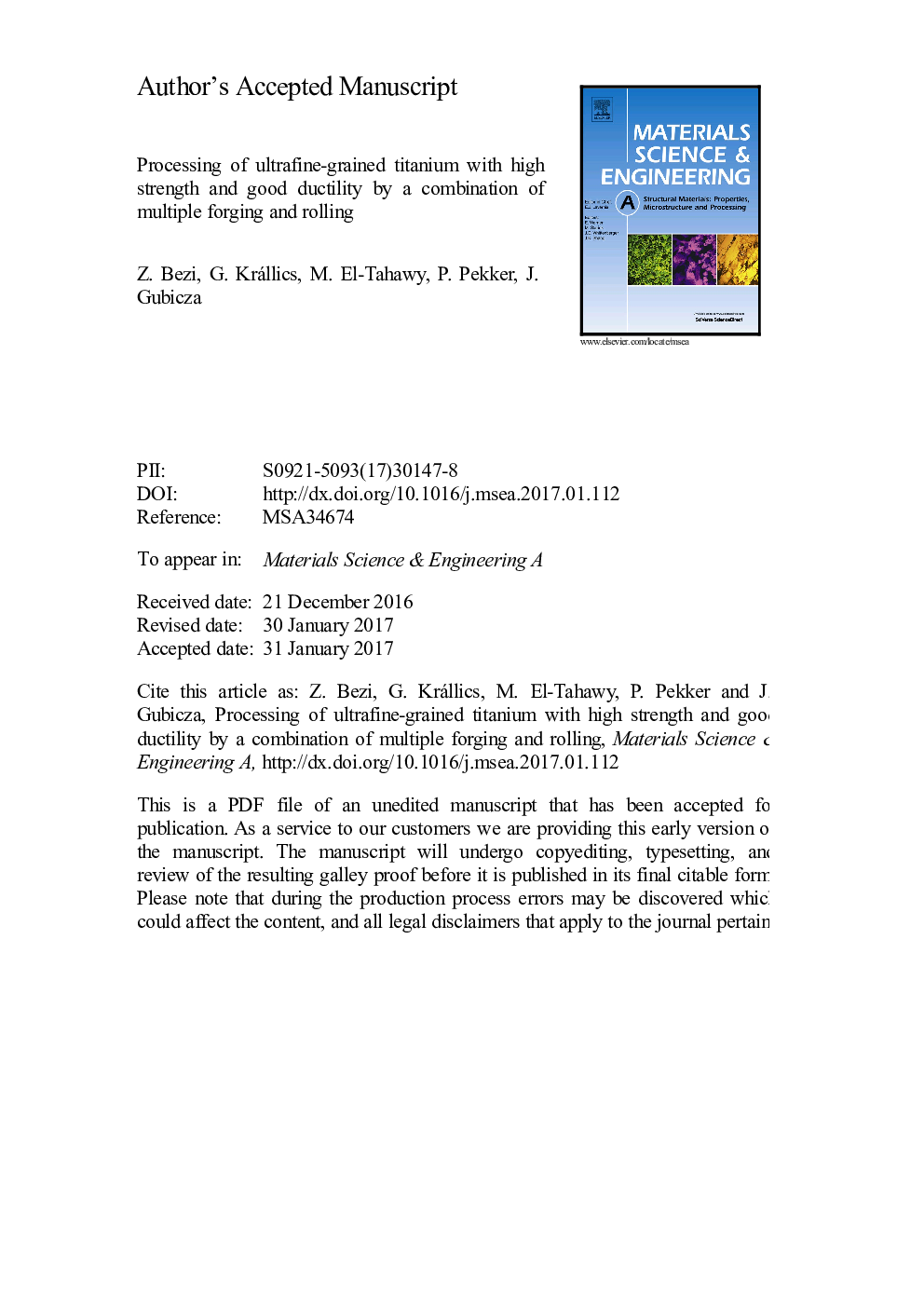| Article ID | Journal | Published Year | Pages | File Type |
|---|---|---|---|---|
| 5456191 | Materials Science and Engineering: A | 2017 | 32 Pages |
Abstract
The microstructure and the mechanical properties of Grade 2 titanium semi-products processed by a combination of multiple-forging and subsequent plane rolling are studied. It is shown that the application of this technology on Grade 2 titanium doubled the strength without considerable deterioration of ductility at room temperature. The high strength is caused by the ultrafine-grained (UFG) microstructure with high dislocation density. The minimum grain size and the maximum dislocation density achieved by the combined method were very low (~560Â nm) and high (~18Ã1014Â mâ2), respectively. Mechanical modelling suggests that the effectiveness of multiple forging in grain refinement is mainly caused by the large, homogeneous imposed strain in non-monotonic strain path, similar to conventional severe plastic deformation (SPD) methods. The total equivalent strain at the end of the rolling step is about 4.4. The good ductility of this material can be attributed to the coarse grains embedded in the UFG matrix which formed due to dynamic recovery and recrystallization at the elevated temperature of rolling. It is proved that the combined method of multiple-forging and plane rolling might be a candidate technology in mass-production of UFG titanium with improved mechanical properties.
Related Topics
Physical Sciences and Engineering
Materials Science
Materials Science (General)
Authors
Z. Bézi, G. Krállics, M. El-Tahawy, P. Pekker, J. Gubicza,
